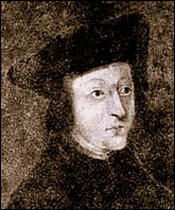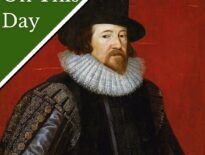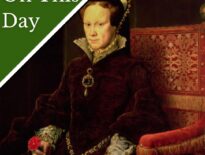 On this day in Tudor history, 21st January 1556, imperial ambassador Eustace Chapuys died in Louvain, the place he had retired to in 1549. He was laid to rest in the chapel of Louvain College, the college he had founded.
On this day in Tudor history, 21st January 1556, imperial ambassador Eustace Chapuys died in Louvain, the place he had retired to in 1549. He was laid to rest in the chapel of Louvain College, the college he had founded.
Chapuys is one of my favourite sources for the reign of Henry VIII because his dispatches to the emperor and his fellow ambassadors are so detailed.
But who was Eustace Chapuys? Let me tell you a bit more about him...
- He was born between 1490 and 1492 and was the second son of Louis Chapuys, a notary of Annecy, in the duchy of Savoy.
- Chapuys studied at Turin University, a university known for its humanism and its excellent law department, and became a doctor of civil and canon law.
- He was appointed an official to the Bishop of Geneva and became a canon of the cathedral in July 1517, when he was in his twenties.
- In 1522 he was granted the deanery of Vuillonay and by August 1526 he was the Duke of Bourbon’s ambassador to Emperor Charles V’s court in Granada, Spain.
- It is thought that he first visited England in September 1526.
- In the summer of 1527, following the death of his employer, the Duke of Bourbon, at the sack of Rome, Chapuys joined the imperial service, working under Nicholas de Perrenot, seigneur de Granvelle.
- Two years later, in September 1529, he arrived in England to act as advisor to the emperor’s aunt, Catherine of Aragon, in the negotiations regarding the annulment of her marriage to Henry VIII. He was her link to the Emperor and to Rome.
- In May 1533, Chapuys was responsible for preparing Catherine’s formal protest when Cranmer summoned her to his special court, and in 1534 he acted for Catherine’s daughter, Mary, when he drew up her protest against the Act of Succession.
- Fearing for Mary’s safety in 1535, Chapuys made a plan to help the princess escape England, but this was vetoed by the Emperor, and in October 1535 he supported the idea of military action to help Catherine of Aragon.
- In January 1536, he rushed to the dying Catherine of Aragon’s bedside and only left her when he believed that she was on the mend. When she died on 7th January 1536, Chapuys believed she had been poisoned.
- That same month, in his dispatch regarding King Henry VIII’s jousting accident, Chapuys was rather cutting about the king, commenting “Thinks he might ask of fortune for what greater misfortune he is reserved, like the other tyrant who escaped from the fall of the house, in which all the rest were smothered, and soon after died”, referring to Theramenes, leader of the Thirty Tyrants of Athens.
- In May 1536, at the fall of Anne Boleyn, he noted that the men accused with her were “condemned upon presumption and certain indications, without valid proof or confession” and that “there are some who murmur at the mode of procedure against her and the others”. He also wrote “You never saw prince nor man who made greater show of his (cuckold’s) horns or bore them more pleasantly. I leave you to imagine the cause.” He was very sceptical.
- Chapuys was responsible for the reconciliation of Mary and her father, the king, in the summer of 1536 because he persuaded her to submit to the king. Concerned about her safety, following threatening visits from members of the king’s council, Chapuys got Mary to submit without reading what she was signing, assuring her that the pope and emperor understood and would not condemn her actions.
- In the autumn of 1536, his good friends Lord Darcy and Lord Hussey were involved in the pilgrimage of grace rebellion against the king.
- In 1536 and 1537, Chapuys supported Dom Luis of Portugal as a potential bridegroom for Mary.
- In 1539, he was summoned to the Netherlands, but returned to England in 1540, beginning “a diplomatic dual” with Charles de Marillac, the French ambassador. He hated France and the French, and even threatened to disinherit his niece if she married a Frenchman.
- Chapuys was involved in the negotiations which led to King Henry VIII and Emperor Charles V declaring war on France in 1543, and he accompanied Henry’s men to France
- He wanted to retire in 1544, but had to help his successor, Van der Delft, for some time, and then was sent to Bourbourg, near Gravelines, to negotiate until July 1545, when he was finally released from service. On his retirement, Chapuys lived in Louvain, where he founded a college, as well as a grammar school at Annecy. In 1555 he decided that his English pension should go towards setting up a scholarship for English students at Louvain.
- Historian C S L Davies writes that “His last known state paper is an acute analysis of the political situation as Henry lay dying in January 1547.”
- He had a son, César, who was made legitimate in 1545 but who died in 1549.
- Chapuys was in his sixties when he died on 21st January 1556.
I highly recommend Lauren Mackay's book on him, "Inside the Tudor Court".



Leave a Reply